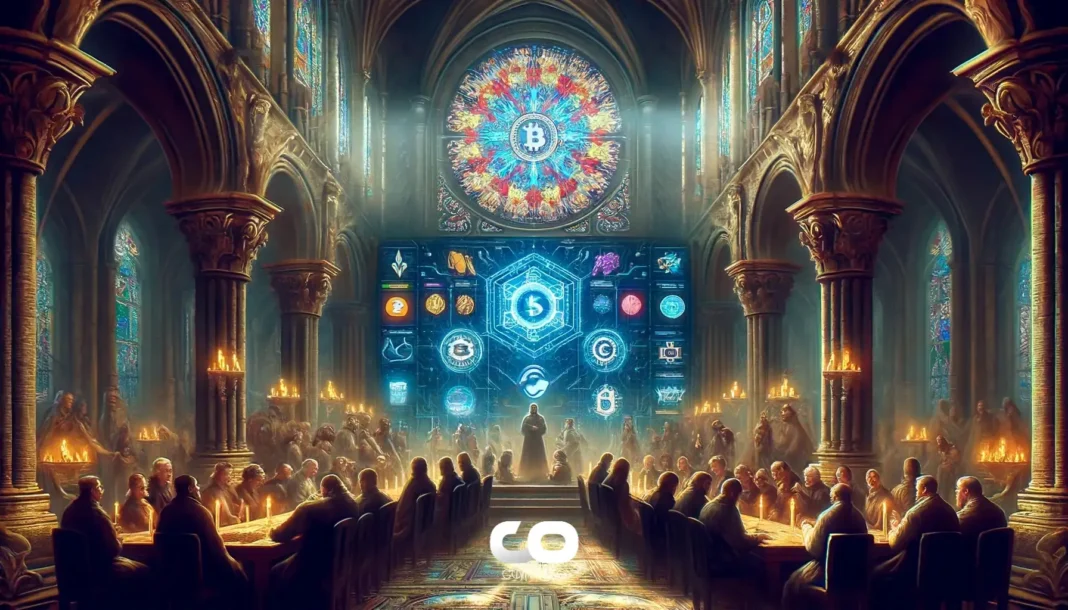-
Charles Hoskinson, the visionary founder of Cardano, has recently shared pivotal updates on the project’s direction, underscoring its ambitious goals in the crypto space.
-
Among these priorities is the drive to evolve Bitcoin’s decentralized finance (DeFi) ecosystem within Cardano’s architecture, setting the stage for transformative advancements.
-
“We are working towards a multi-faceted integration strategy,” Hoskinson noted, emphasizing a collaborative future that embraces innovation and partnerships within the blockchain sector.
Discover the latest updates from Cardano and its strategic vision, including integration with Bitcoin’s DeFi and a focus on scalability. Stay informed!
Strategic Integration of Bitcoin DeFi in Cardano
The integration of Bitcoin’s decentralized finance (DeFi) into Cardano represents a significant milestone for the platform. By leveraging Bitcoin’s established network and security features, Cardano aims to introduce innovative financial applications that could revolutionize how users interact with their digital assets. This move aligns with the growing trend of interoperability among blockchain networks, as developers seek to create more seamless and efficient solutions for the cryptocurrency community.
Enhanced Scalability with Ouroboros Leios
An essential aspect of Cardano’s future is the adoption of Ouroboros Leios, a new variant of their proof-of-stake consensus mechanism. This technology is designed to drastically enhance transaction throughput, thereby positioning Cardano as a viable competitor against industry heavyweight Solana. By focusing on scalability, Cardano is laying the groundwork to better handle increased user demand and more complex decentralized applications.
Collaboration with Leading Blockchain Entities
Charles Hoskinson’s recent announcements included a commitment to engage with significant partners in the blockchain ecosystem. He highlighted upcoming discussions with Chainlink, a leader in decentralized oracle technology, which could enable Cardano to facilitate more robust smart contracts and decentralized applications. Additionally, talks with Ripple regarding the integration of RLUSD stablecoins underline Cardano’s effort to enhance its ecosystem by incorporating essential financial instruments.
Rejecting Ecosystem Funding from Internal Profits
In a notable stance on resource allocation, Hoskinson dismissed the idea of using profits from Input Output Global (IOG) to fund ecosystem initiatives such as stablecoin development. He asserted, “This is not people’s money,” indicating a commitment to maintaining financial integrity and transparency within the community. This perspective reinforces the ethos of decentralization and accountability, which is foundational to Cardano’s philosophy.
Market Performance and Future Outlook
Despite experiencing a downturn of over 5.1% in the last 24 hours, Cardano (ADA) maintains its position among the top 10 cryptocurrencies by market capitalization. This resilience is indicative of a strong underlying community and sustained interest in the project’s long-term vision. Following a significant rally, stakeholders may continue to observe market movements closely, particularly as foundational shifts occur regarding scalability and integration initiatives.
Conclusion
In summary, Cardano is poised to redefine its trajectory with a focus on integrating Bitcoin’s DeFi elements and enhancing scalability through Ouroboros Leios. The project’s partnerships and strategic decisions strongly suggest a future aimed at interoperability and sustained growth. As developments unfold, both enthusiasts and investors should remain vigilant regarding Cardano’s potential to impact the broader cryptocurrency landscape significantly.







